The definitive guide to running shoe breathability
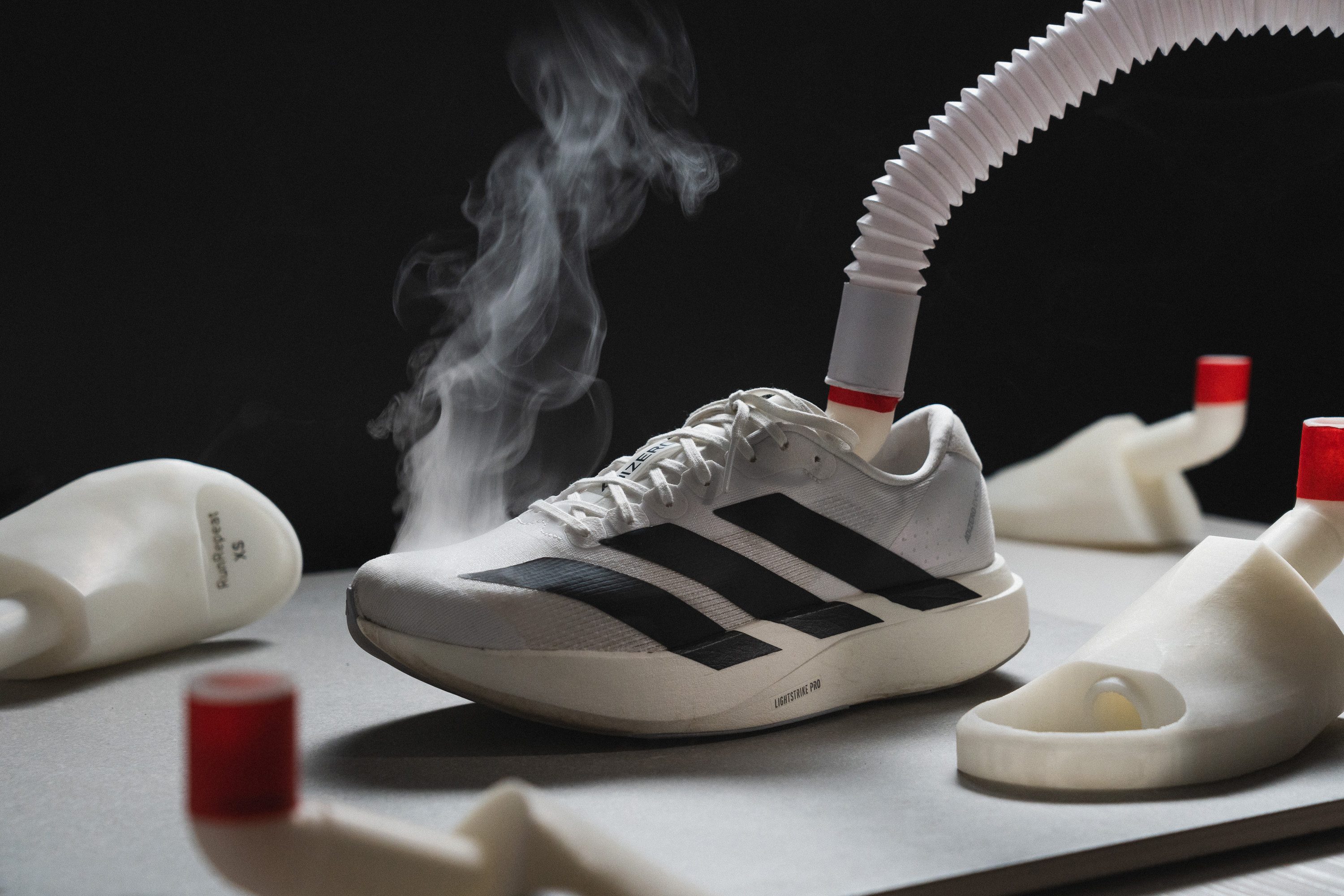
Breathability in running shoes it's a crucial feature that's often overlooked by both consumers and critics alike. At RunRepeat, we're convinced of the essential role of airflow—a view that is supported by this study as well.
To provide you with the most accurate and comprehensive insights, we employ cutting-edge smoke tests for each pair of shoes that undergoes our lab tests. Additionally, we utilize a microscope and a powerful light to delve deeper into the structural aspects that influence airflow and ventilation.
In this guide, we'll provide you with a comprehensive overview of everything you need to know about the crucial role of breathability in running shoes.
How breathability affects your running experience

Breathability is a critical factor in running shoes for several compelling reasons, all aimed at maintaining the optimal condition of your feet during your daily runs, interval training or competitions.
When your feet are not well-ventilated, it creates a breeding ground for problems that could compromise your performance. For instance, inadequate airflow can lead to increased moisture, which in turn can cause blisters. These seemingly minor issues can have major consequences—there are numerous instances where runners have had to significantly reduce their pace, or worse, DNF in long-distance events like half-marathons, marathons and ultras, due to such complications.
Moreover, poor breathability can also contribute to overheating, which not only affects your feet but can impact your overall body temperature regulation. This can lead to premature fatigue, reducing your endurance and affecting your running efficiency.
Therefore, understanding the breathability of a running shoe isn't merely a matter of comfort—it's a vital component for achieving your best possible performance.
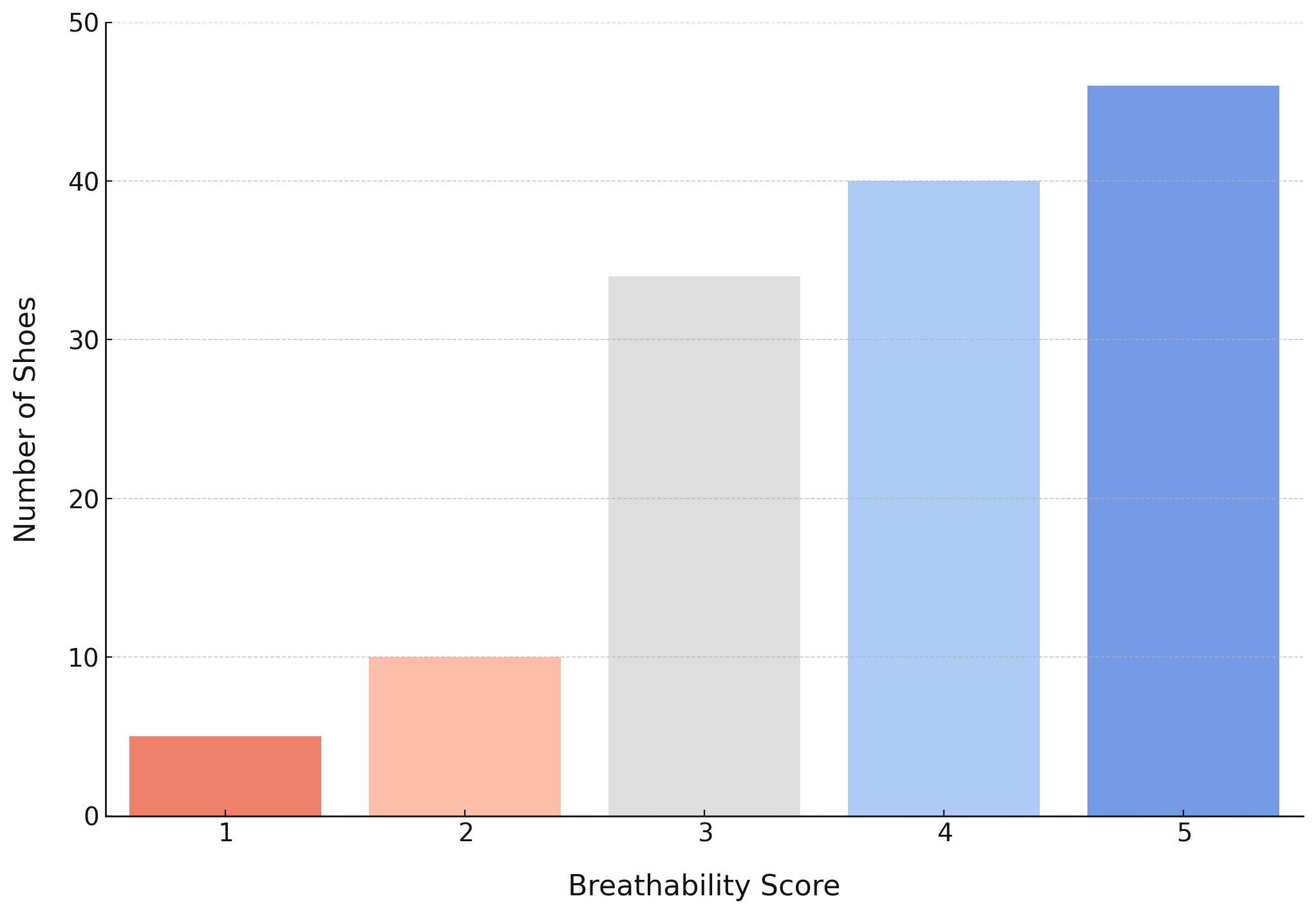
Fortunately, the chart above—made from 136 road running shoes—illustrates that most shoes today offer at least average breathability, a significant improvement from the past decades.
Previously, engineered mesh often fell short in breathability, and many shoes were still crafted from non-breathable materials like leather. Thus, we are indeed experiencing a golden era of running shoes. A shoe scoring a modest 3 out of 5 on our current breathability scale would have been considered exceptional in terms of airflow just a few years ago!
Selecting the right shoe for different weather conditions
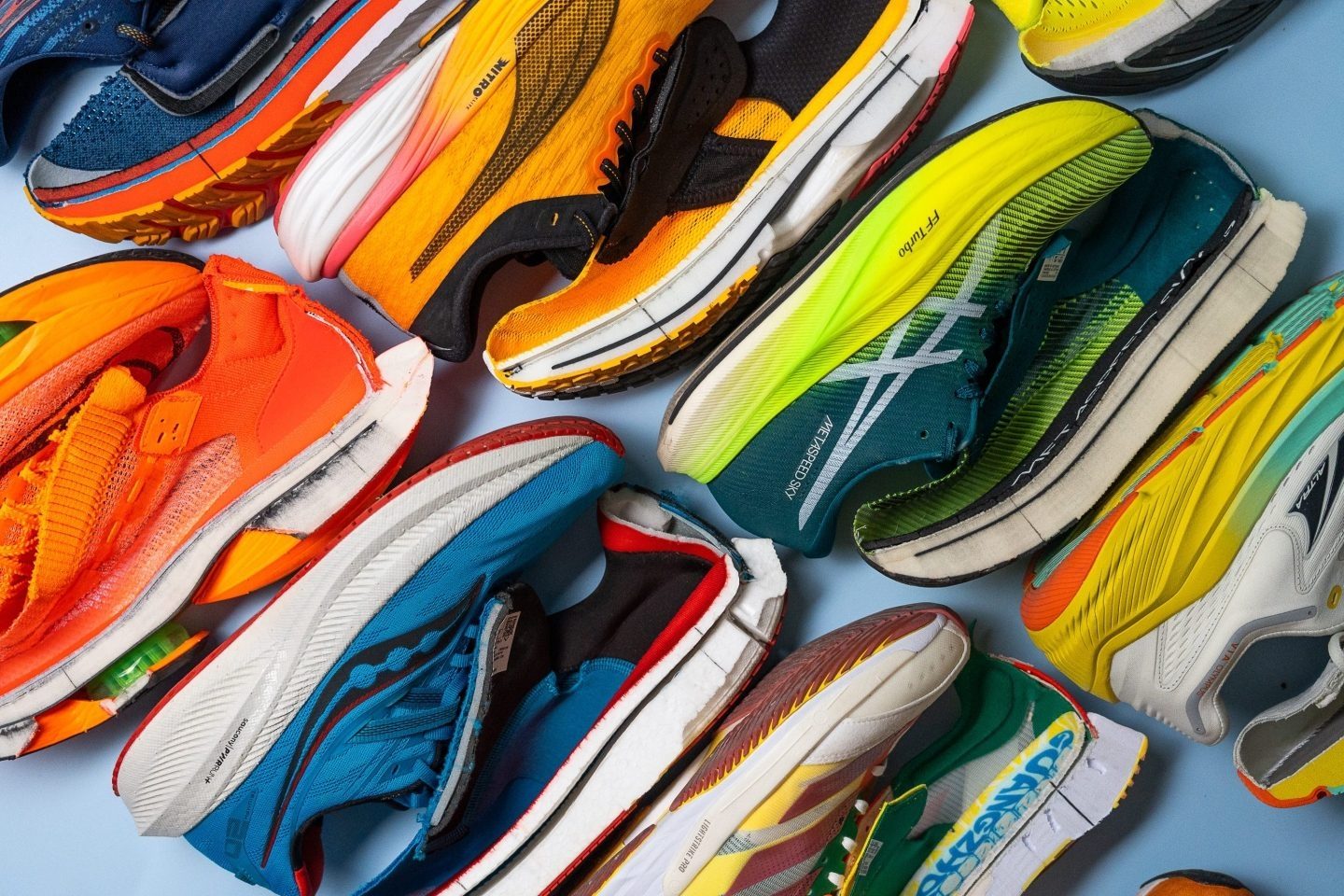
As you can imagine, running a 20-miler in the scorching heat of a Texas summer requires different footwear considerations than an easy run through a New England winter. Each climate poses unique challenges and demands distinct features from your running shoes and socks, particularly when it comes to breathability and ventilation.
In order to streamline your decision-making, we've organized our recommendations by season and created a table to guide you in pairing the right shoes with the appropriate socks.
| Season | Shoe breathability | Socks |
| Spring | Mid / High | Thin / Mid / Thick |
| Summer | High | Thin (sweat-wicking) |
| Autumn | Mid / High | Thin / Mid / Thick |
| Winter | Low / Mid | Mid / Thick |
When it comes to socks, it's best to avoid cotton year-round. Cotton traps moisture, creating an environment ripe for blisters and fungal infections.
Opt for high-quality natural fibers like merino wool (cold temperatures), which offers breathability, moisture-wicking, and antibacterial properties to keep odors at bay. Consider polyester or nylon for summer, as they excel in durability, breathability, and sweat-wicking.
Finally, should blisters or foot odor be a major concern, many brands offer specialized sock options to help with these problems.
Summer
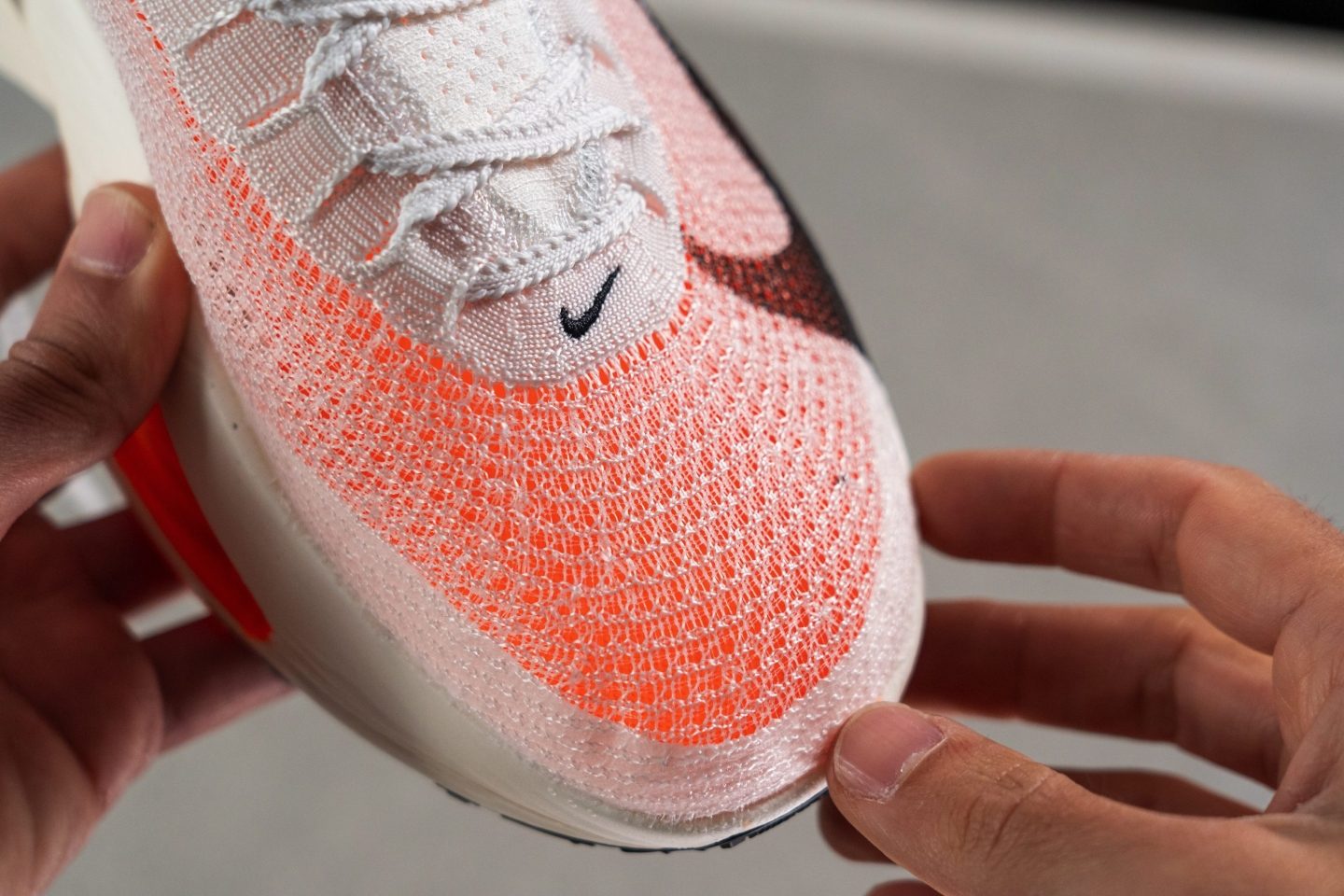
When selecting your ideal running shoe for summer, we strongly recommend opting for one that scores at least a 4-out-of-5 on our breathability rating scale. However, if you reside in humid climates, we urge you to consider shoes that have achieved a perfect score of 5. Humid environments can exacerbate the risks associated with low breathability, making your summer runs not just uncomfortable, but potentially hazardous to your foot health and enjoyment.
To further optimize your experience, we also advise pairing your breathable shoes with thin, moisture-wicking socks. Thick or non-breathable socks can negate the benefits of a well-ventilated shoe by trapping heat and moisture.
Here are 10 running shoes that have earned our highest recommendations for 5/5 breathability based on our lab testing:
Winter
While it's easy to assume that higher breathability is always better, this is not universally true. In colder climates where temperatures regularly dip below 40 degrees Fahrenheit, a less breathable shoe may actually be more beneficial.
Shoes scoring 1-to-3 out of 5 in our breathability tests offer excellent heat retention, making them strong candidates for winter running. And pairing them with thick socks can result in an exceptionally warm and comfortable experience in extreme cold conditions.

Conversely, opting for highly breathable shoes and thin socks in such climates can leave your feet uncomfortably cold, compromising your overall performance and enjoyment of the run.
For those in milder winter climates, where temperatures typically range between 40ºF and 50ºF, you have more flexibility in your choices. Thin socks can be paired with less breathable shoes to strike a balance between warmth and moisture management. Alternatively, breathable shoes worn with thicker socks can also offer a comfortable running experience.
Here's a carefully selected list of 10 running shoes designed to keep your feet cozy during winter runs:
Autumn and Spring
Running during transitional seasons like spring and autumn can pose a unique set of challenges. Questions about appropriate attire, such as whether to wear long sleeves or bring gloves, often arise. Moreover, fluctuating temperatures within a single long run can further complicate your footwear choices in terms of breathability.

To simplify the decision-making process, consider whether the day's conditions more closely resemble summer or winter, and choose your shoes accordingly.
A word of caution, though: In our experience, runners often overdress for the weather in every season. This tendency extends to footwear as well. If you find yourself uncertain, it's generally safer to opt for the most breathable shoe and sock among your considerations. Or just follow the famous rule of thumb: "dress like it's 15-20 degrees warmer than it really is."
Here's another meticulously curated list of 10 running shoes that excel in mild climates, each scoring between 3 and 4 in breathability for optimal comfort:
Ranking the top brands regarding breathability
Disclaimer: The data is based on our own subjective assessments of breathability, derived from our lab-based smoke tests on +200 running shoes. Therefore, the data could vary if every available shoe in the market were to be analyzed.
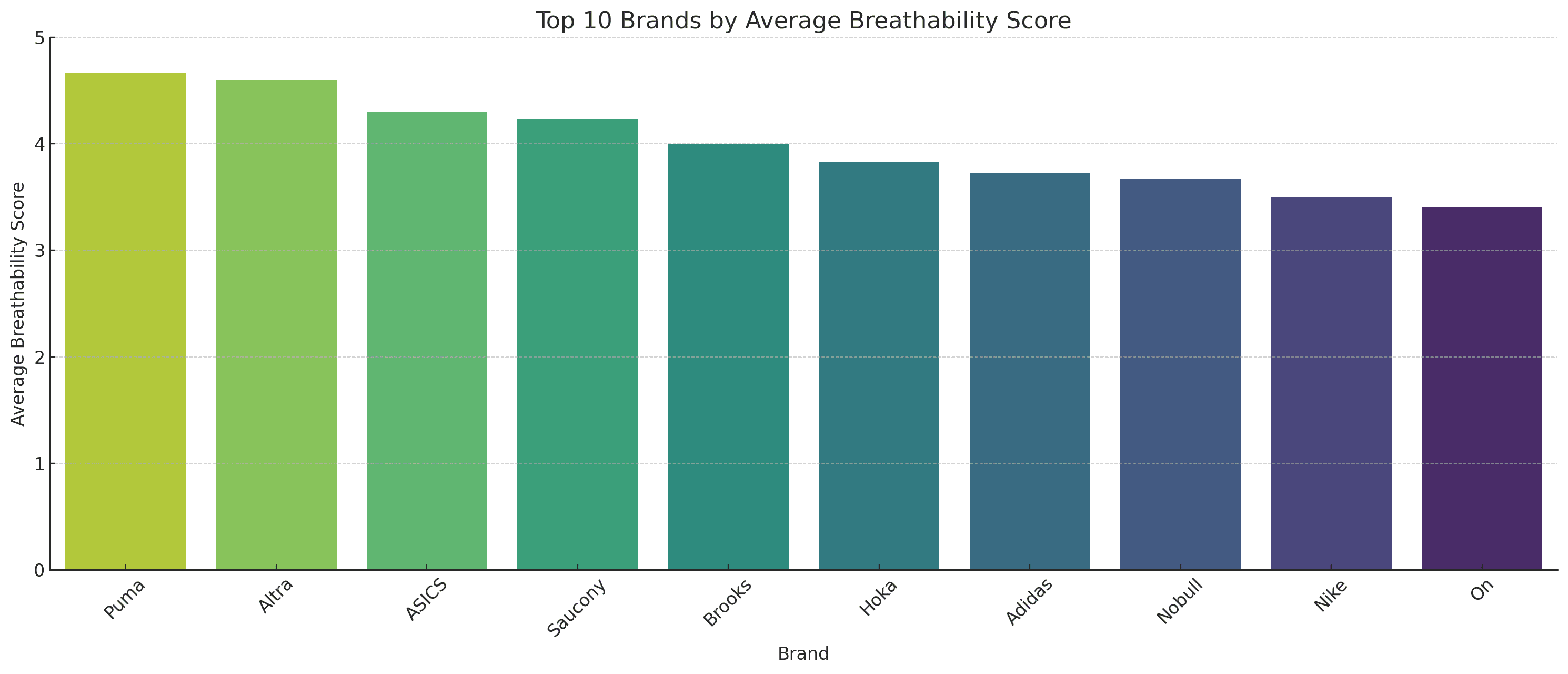
In simple terms, PUMA is the top brand for breathable running shoes right now. They're closely followed by Altra and ASICS, which also do a great job. On the other hand, Nike and On need to do better in making their shoes more breathable. If they don't improve, they might lose customers who care about this feature.
While the summary provides a broad overview of how brands perform in breathability, it shouldn't be considered a definitive guide for any specific shoe model. For example, even though Nike may lag in average airflow, it does offer models like the Alphafly 2, which lead the market in this area.
Similarly, ASICS, despite its high average score, has some premium models like the Nimbus 25 that don't measure up in terms of breathability. Therefore, it's important to look at individual shoe reviews and lab specs to make the most informed decision for your needs.
Breathability in engineered mesh running shoes
Engineered mesh uppers stand out as a prime choice for breathability. Our lab data consistently shows that, in terms of breathability, mesh uppers are generally the top performers.
This is largely because mesh tends to be more durable than knit materials at comparable thickness levels. Adding ventilation holes to mesh has a minimal impact on its overall durability, whereas knit uppers can easily develop holes when modified for breathability. Runners who have owned knit shoes will likely attest to this issue.
However, it's important to note that not all engineered mesh uppers are created equal in terms of breathability. There are various methods to enhance airflow, including microscopic and visible ventilation holes. Each approach has its own advantages, and the effectiveness can vary between different shoe models.
Microscopic ventilation holes
When we examine shoes under the microscope in our lab, one feature that often comes into focus is the presence of microscopic ventilation holes.
These are usually not visible to the naked eye, but they can significantly impact a shoe's breathability. Typically, we suspect a shoe belongs in this category when it demonstrates exceptional airflow in our smoke tests, even though no obvious ventilation holes are apparent.
A prime example of this category is the Adidas Adizero Adios 8. At first glance, the shoe appears to lack specific ventilation holes but it easily achieves 5/5 in our test. However, microscopic examination reveals a thin mesh with thousands of incredibly tiny holes that contribute to its excellent breathability.
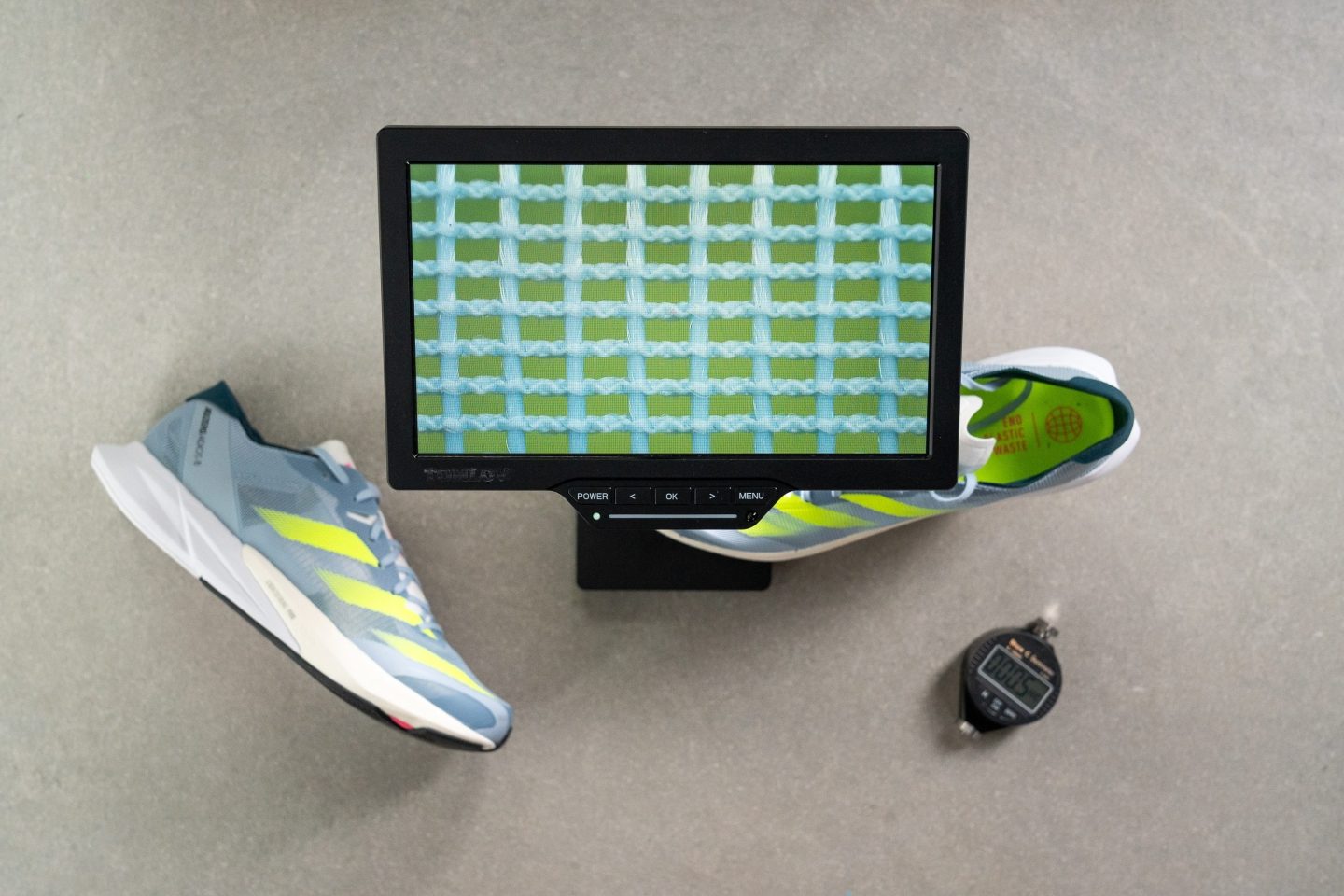
Visible ventilation holes
Whenever we unbox a new pair of shoes for testing, one of the first things we examine is the presence of visible ventilation holes. More often than not, they're there, as this is a straightforward and cost-effective way to enhance breathability.
Take the Brooks Beast GTS 23 as a case in point: the shoe is riddled with ventilation holes, easily observable to the naked eye.
When subjected to microscopic analysis, these holes become even more apparent. It's fascinating to see how distinct the pattern of these regular-sized holes is when compared to their microscopic counterparts.
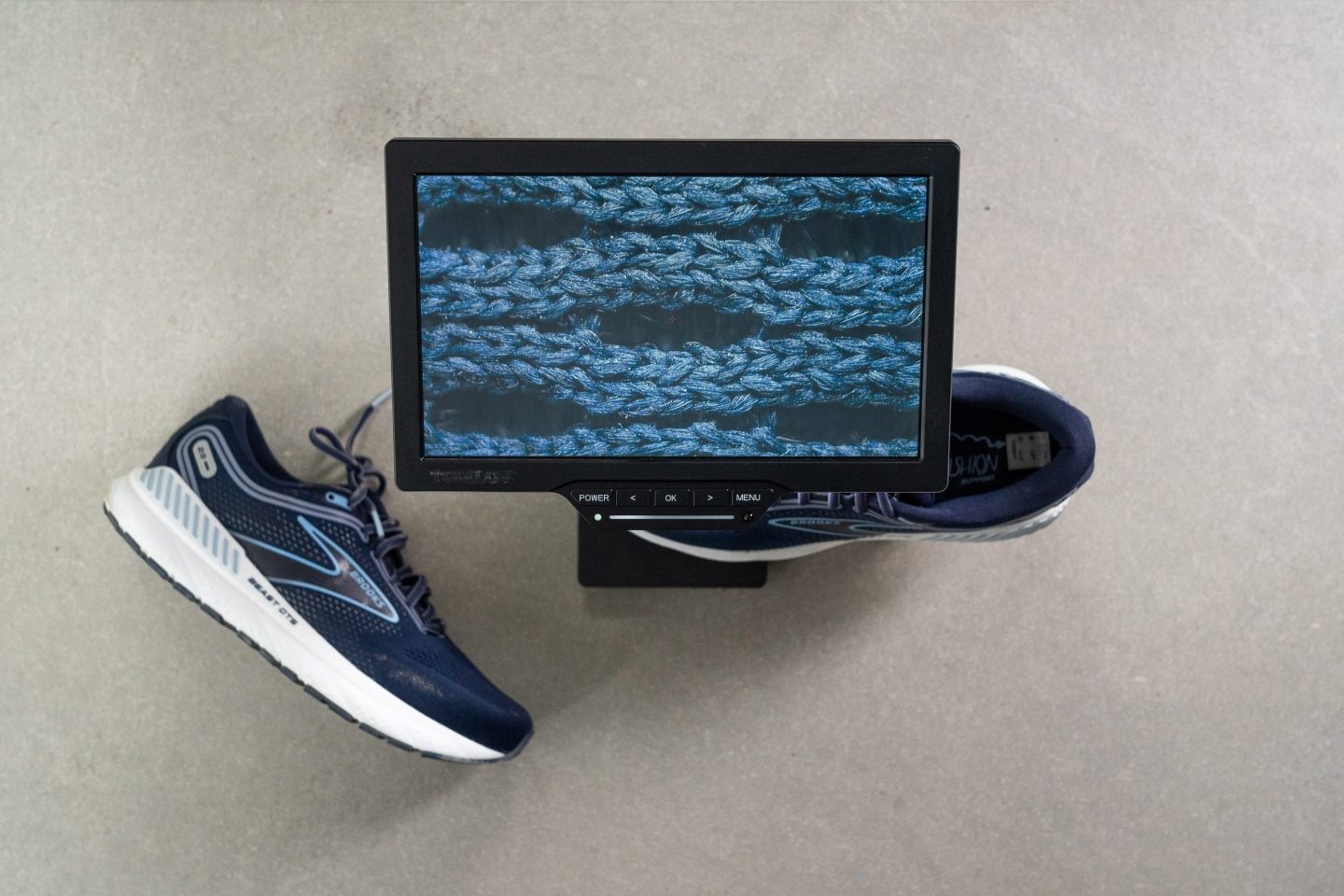
Absence of ventilation holes
Surprisingly, some shoes lack ventilation holes altogether, relying instead on ultra-thin engineered mesh to provide breathability. A notable example is the ASICS Superblast.
While this approach can contribute to enhanced durability, it often results in just-average breathability performance. In the case of this maximalist shoe, it received a score of just 3 out of 5 in our breathability tests.

Upon microscopic examination, the reason became clear: the shoe lacks any form of ventilation holes, confirming our observations about its average breathability.
Breathability in knit running shoes
Knit uppers are highly regarded for their comfort but come with a couple of significant drawbacks: they often need to be thicker for durability, which compromises their breathability, and they are more prone to wear and tear.
For these reasons, we generally recommend lightweight, engineered mesh uppers for summer running—they excel in wicking away moisture and facilitating airflow.
In contrast, knit uppers are better suited for colder weather, as they retain heat more effectively. Think of it as the difference between a wool sweater (knit) and a running jacket (mesh) based on the weather conditions.
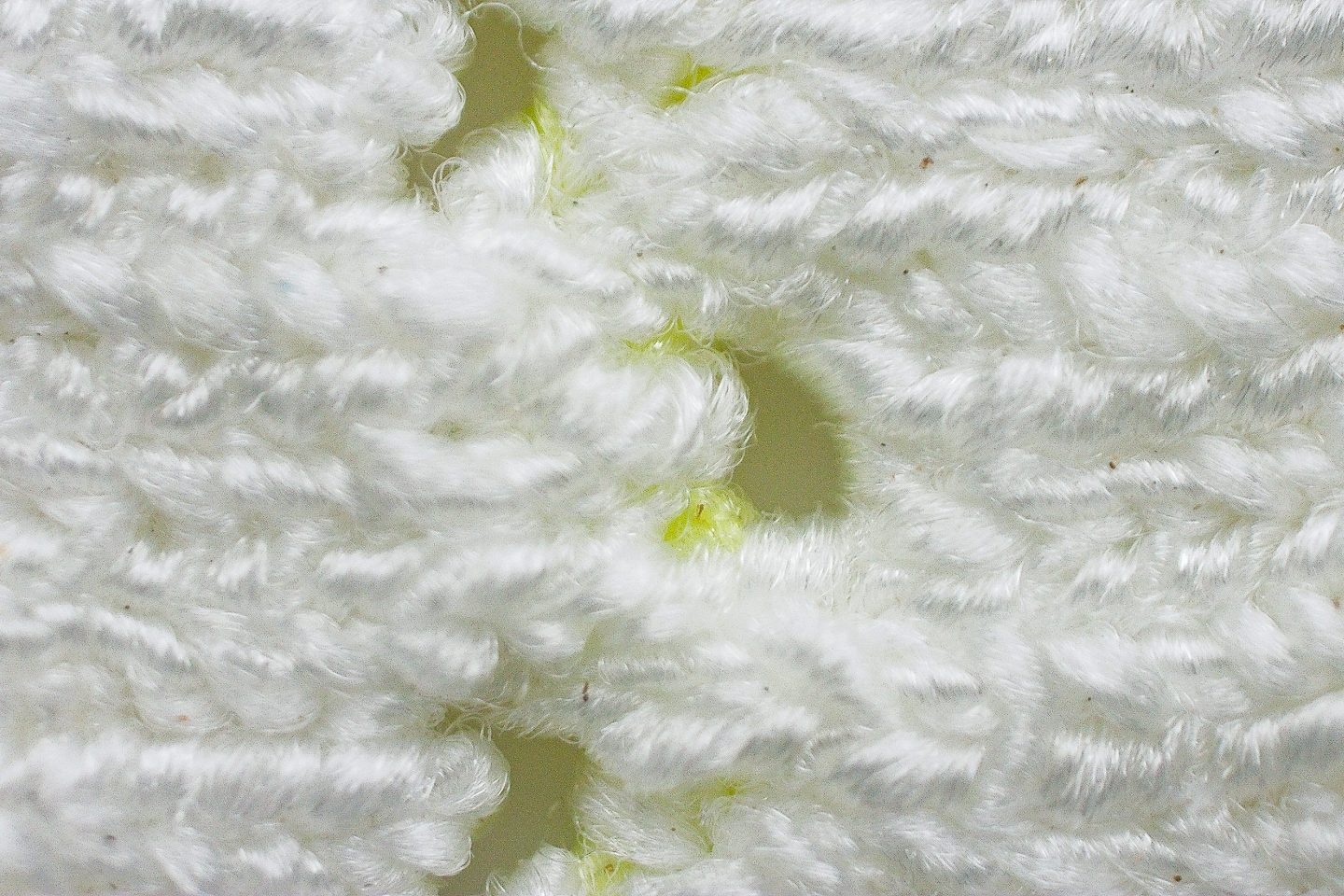
Foot problems caused by shoe overheating during your runs
Overheating—or lack of breathability—in running shoes can lead to a range of foot issues, some of which can be severe enough to halt your training or even require medical intervention.
Below is a compilation of potential complications that could emerge in your runs due to overheating in running shoes:
- Blisters: Universally experienced by runners, blisters are primarily induced by excessive heat and moisture, exacerbated by the friction of running. Whether filled with blood or clear fluid, these painful irritations can adversely affect your performance.
- Chafing: Particularly common among long-distance runners, chafing often arises due to poor shoe breathability. The combination of excessive moisture and ongoing friction can result in skin irritation, including redness and discomfort.
- Swollen Feet: Often encountered during summer runs and especially during longer distances, swollen feet can make your shoes feel uncomfortably tight. To mitigate this, opt for shoes that are half a size larger and excel in breathability.
- Burning feet syndrome: Also known as Grierson-Gopalan syndrome, this condition manifests as a burning sensation in the balls of the feet, usually caused by nerve inflammation due to excessive heat.
- Foot odor: While not a performance-impacting issue, foot odor can be awkward and uncomfortable. Overheating in shoes can cause excessive sweating and bacterial growth, leading to unpleasant odors.
- Athlete's foot: The warm, damp environment inside poorly ventilated shoes can create a breeding ground for fungal infections like this one.
Selecting a well-ventilated shoe is essential for any run where you'll encounter high heat, particularly when this is coupled with elevated humidity levels.
Such conditions can quickly lead to a variety of foot problems if you're not careful. Alongside choosing breathable footwear, don't overlook the importance of pairing it with moisture-wicking socks.
How specific shoe characteristics impact breathability
In this section, we will look at how breathability in running shoes is linked to other important things like how long a shoe lasts, its weight, and its price.
Are expensive shoes really more breathable? Does a heavy shoe mean less air flow? We'll show you what we found!
Durability vs. Breathability
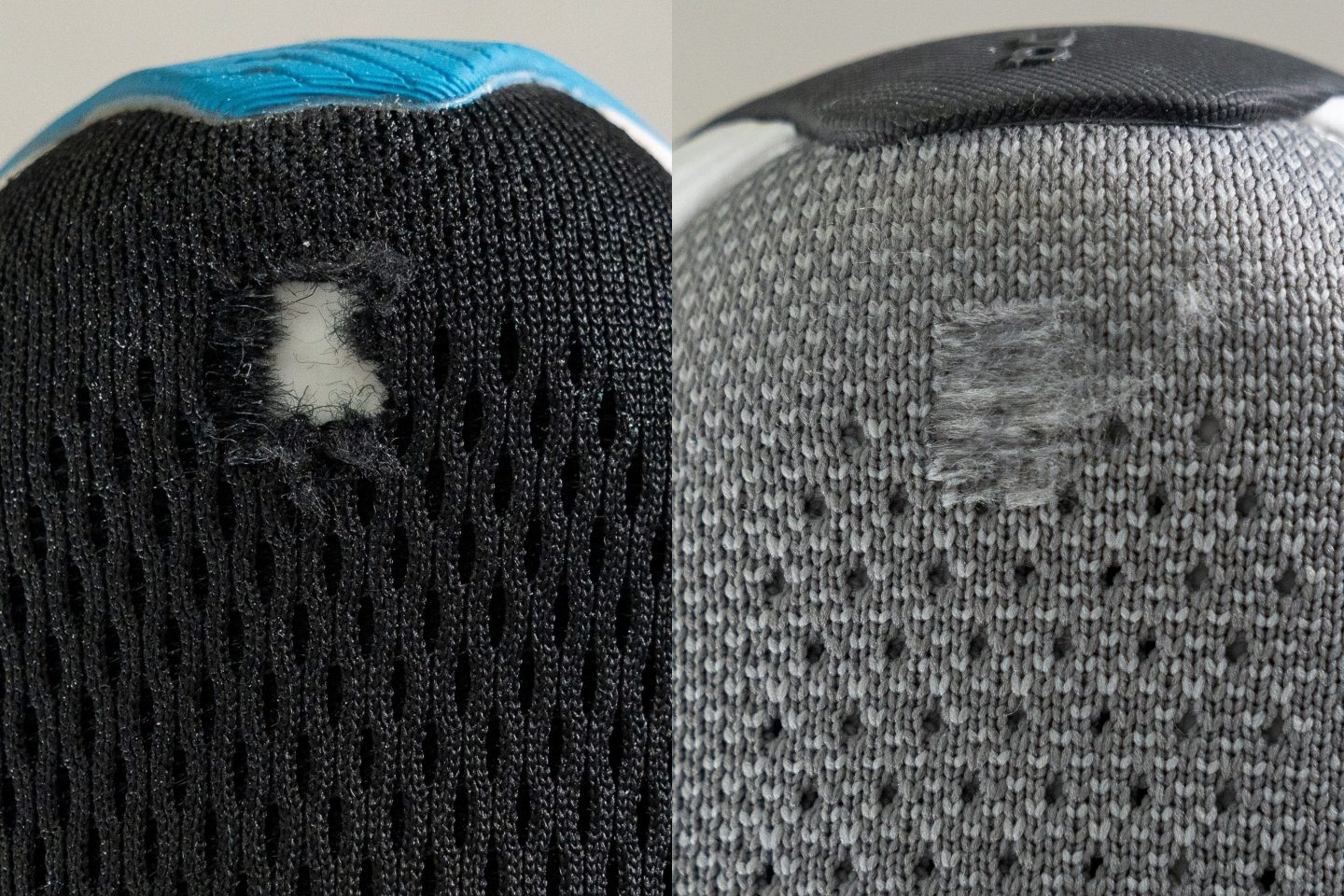
Although there are many factors that play a role in durability—like the resistance of the material or the thickness of the upper—it’s undeniable that it’s logical to think that if a shoe lets more air flow through it, will likely wear a hole faster as if there’s no room for air to pass through. But let’s see if the numbers keep up with this theory.
We’ve crossed the lab results in our Dremel test and our durability test for 70 road running shoes.
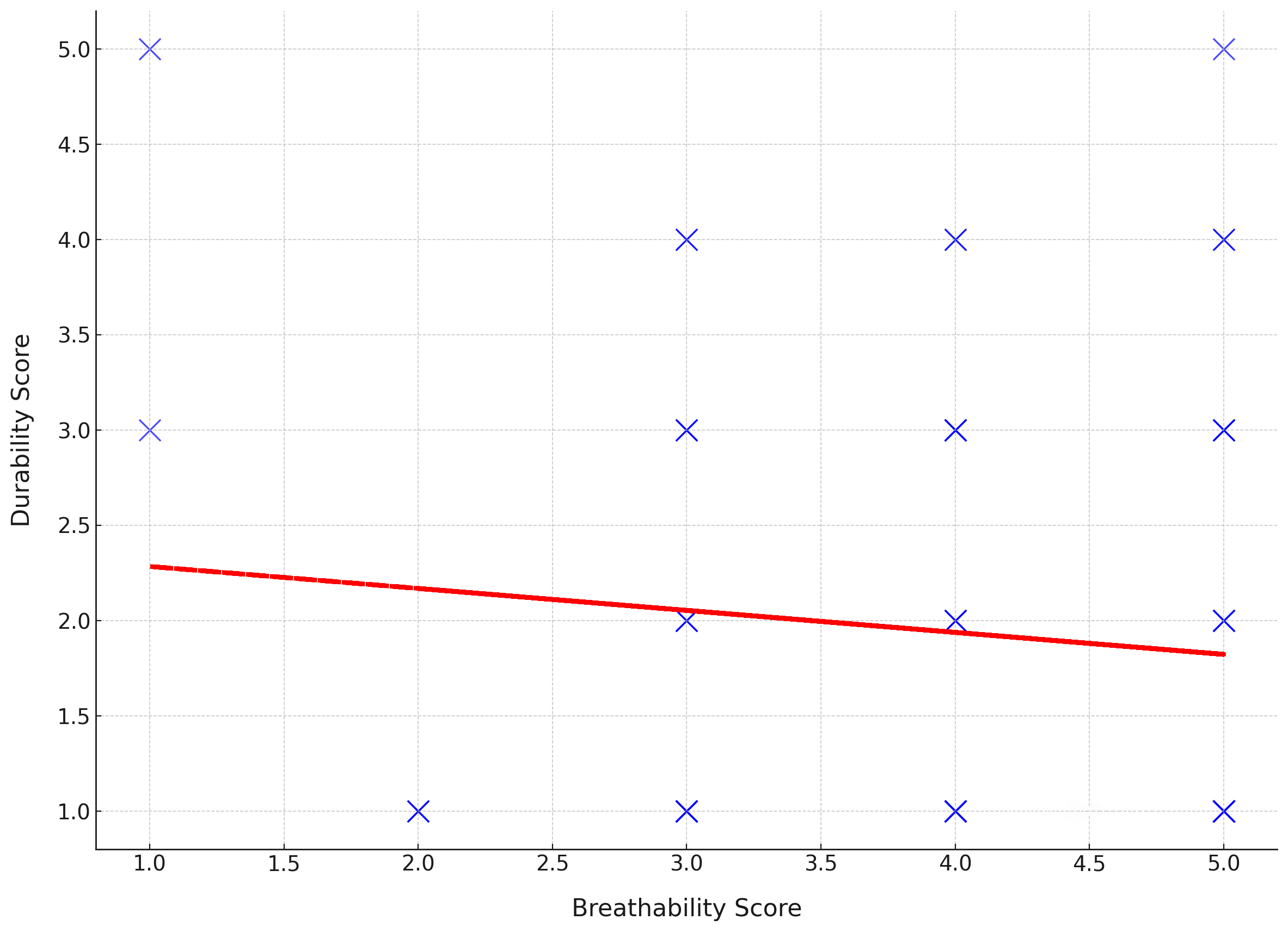
The main takeaway here is that there’s a minor correlation coefficient between the two variables. This value suggests a very weak negative relationship between breathability and durability in running shoes.
For this reason, a shoe with higher breathability is not significantly more likely to have lower durability, or vice versa. As one feature slightly increases (durability), the other slightly decreases (breathability), but the correlation is so weak that it's almost negligible.
It's moments like these that make us truly appreciate the insights gained from the lab!
Shoe weight vs. Breathability

After uncovering a surprisingly weak correlation between breathability and durability, we shifted our focus to the other intriguing variable: shoe weight. Conventional wisdom might suggest that heavier shoes, presumably made with more material, would offer less breathability.
However, it's important to note that various biases and nuances can influence this relationship. For instance, some maximalist training shoes feature lightweight, breathable uppers but are also equipped with a massive stack height that dramatically increases weight.
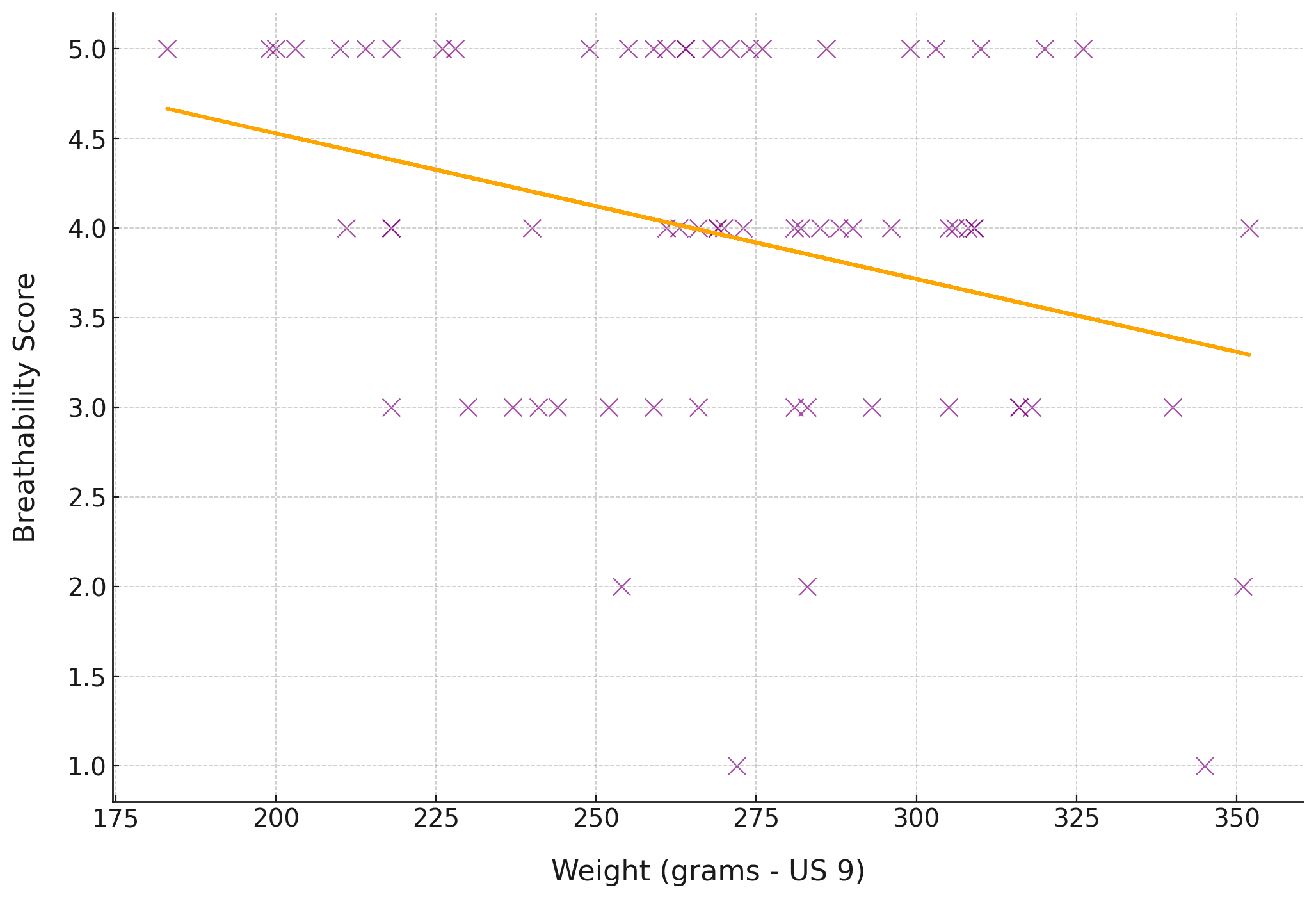
The data suggests a statistically significant negative correlation between weight and breathability in running shoes. While the correlation is not strong (-0.31), it is enough to suggest that lighter shoes tend to be more breathable, or conversely, that heavier shoes may sacrifice some breathability.
Price vs. Breathability
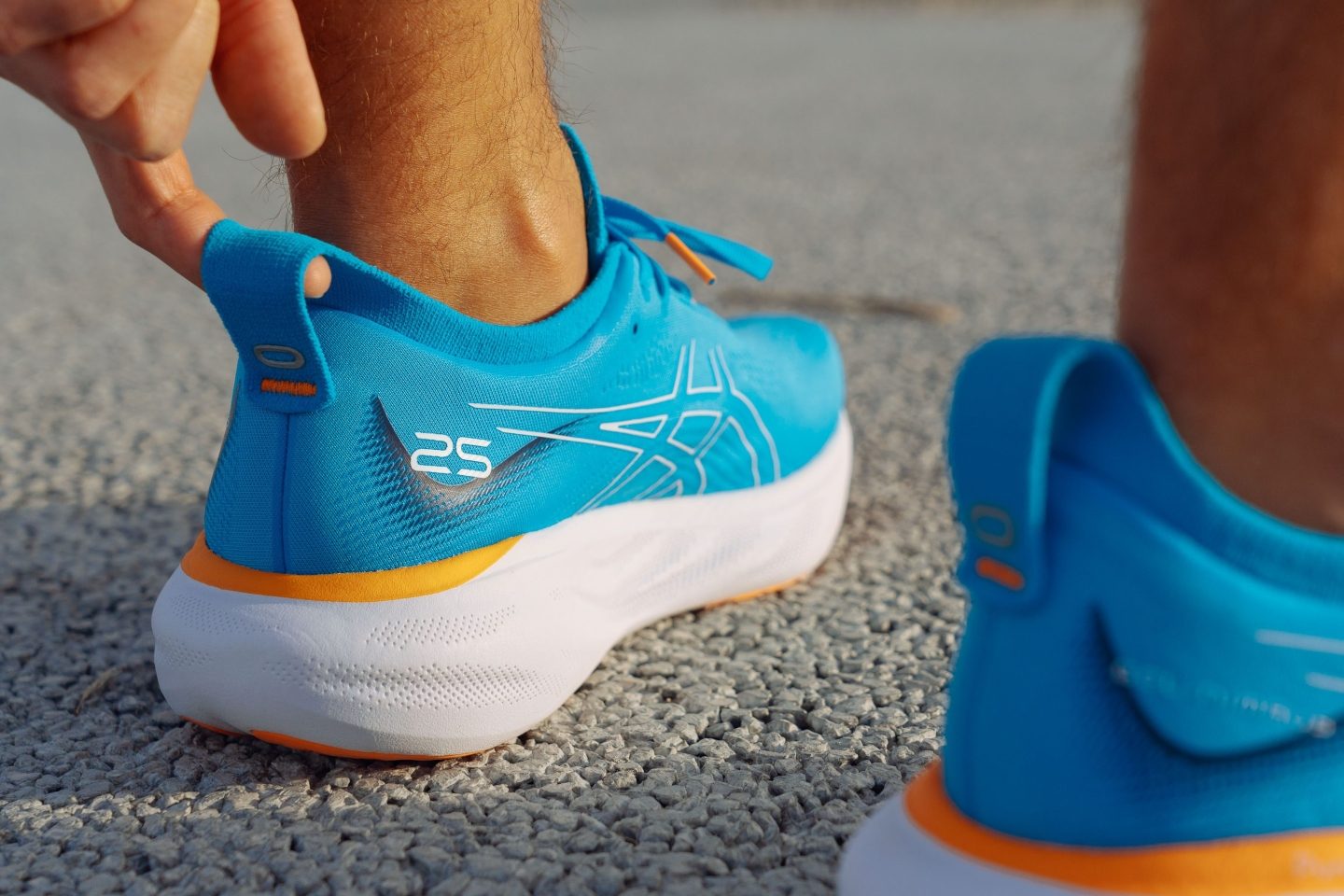
Our final exploration in this series of correlation studies focuses on the relationship between price and breathability in running shoes.
Why is this particular relationship worth examining? In our extensive experience analyzing running shoes, we've often observed that higher-priced shoes tend to feature better-ventilated uppers. However, it's crucial to note that this has been more of an anecdotal observation rather than a confirmed pattern.
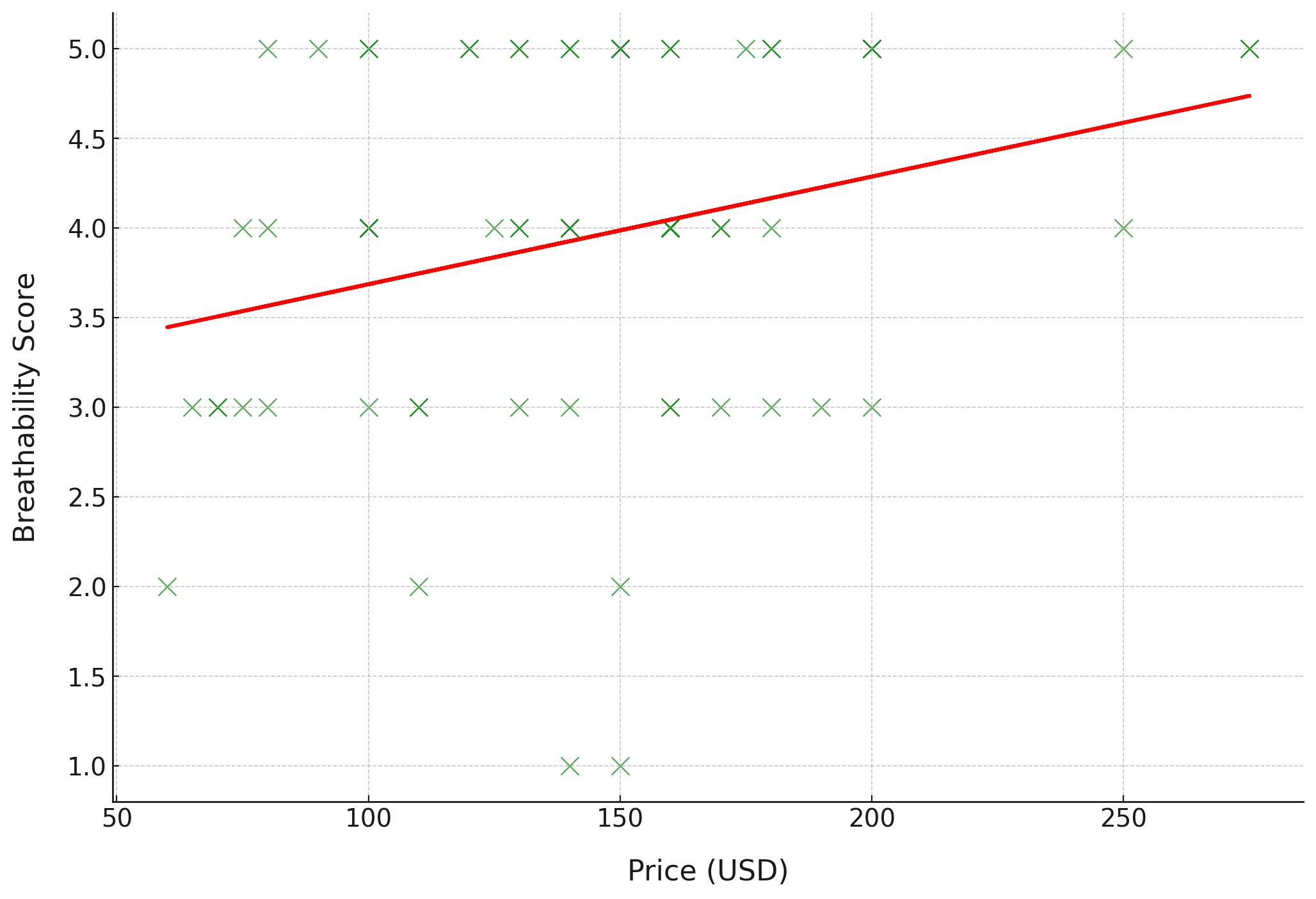
As revealed in this scatterplot, there's indeed a significant correlation between price and breathability. The pricier shoes are slightly more likely to offer better breathability.
For example, shoes with a MSRP around $100 tend to have breathability scores averaging near 3.5. In contrast, those priced around $250 boast an average breathability score exceeding 4.5. Naturally, there are exceptions out there, so it's crucial to individually evaluate each shoe for your specific needs.
Diverse approaches by brands to achieve optimal breathability
One consideration in our breathability testing is that not all shoes achieve this feature uniformly. The way a shoe is designed to be breathable can significantly impact those who have specific problem areas on their feet.
For example, if you're prone to toe blisters, look for a shoe that excels in toebox breathability. Our cutting-edge smoke tests can reveal this; just watch the accompanying picture to see how effectively air circulates in the Ultraboost's toebox due to its numerous ventilation holes.
Conversely, some shoes like the Hoka Transport X score 5/5 in breathability but achieve it primarily through the tongue, making them better suited for different types of foot issues.
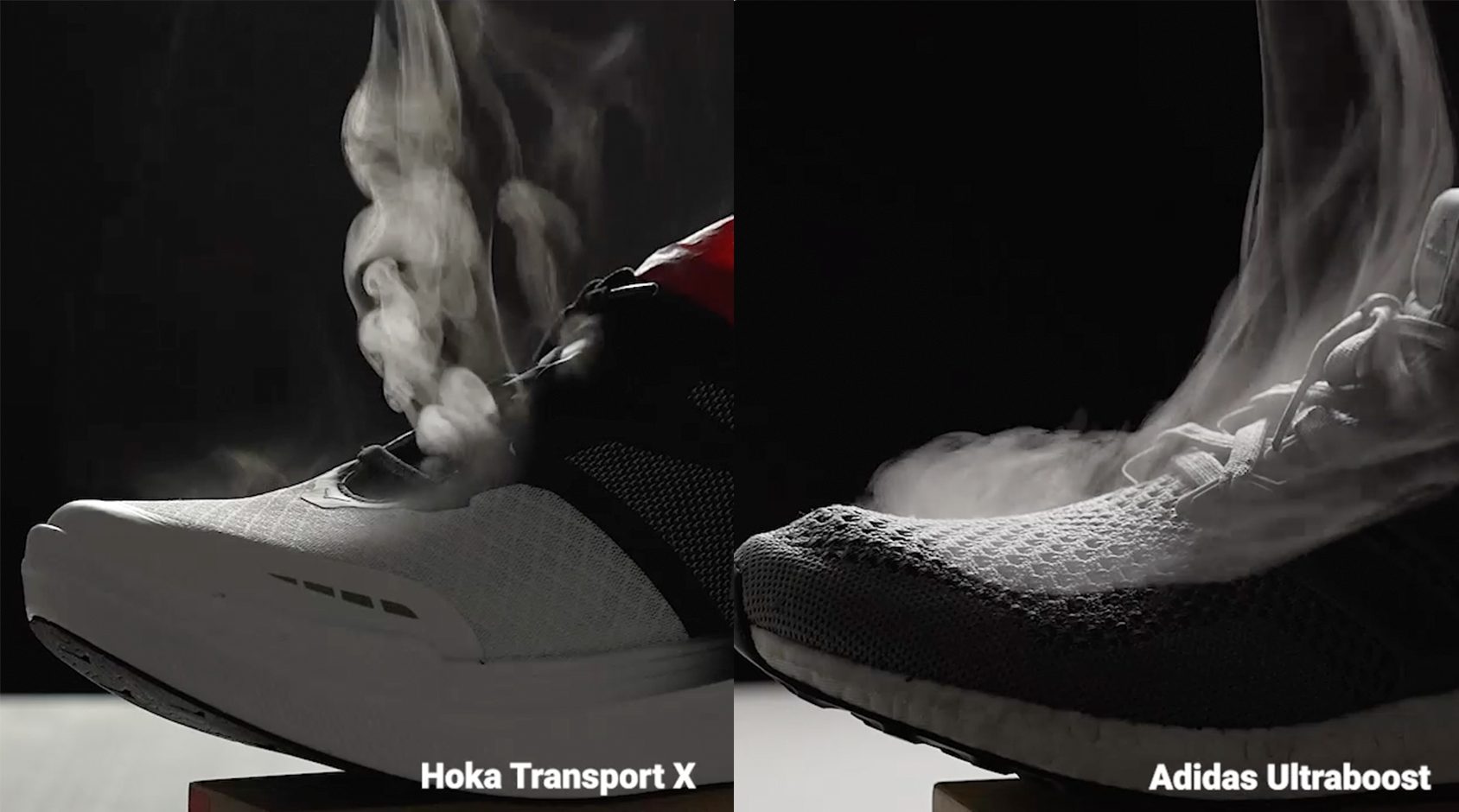
Finally, if you only experience discomfort in the arch of your foot in summer, aim for shoes that offer robust airflow in the medial zone. To assess this feature, we typically hold the shoe's upper against a strong light source during our evaluations.
To clarify the distinction, consider the following examples: First, the PUMA Deviate Nitro Elite 2, that excels in providing excellent ventilation in the medial area.
Contrast this with a shoe that falls short (ASICS Gel Cumulus 25), offering poor airflow in the same region.
Trail shoes and breathability
As you've probably noticed, we haven't focused much on trail running shoes in this guide. That's because breathability hasn't traditionally been a top priority for trail runners, who often value other features like durability, cold resistance, and comfort.
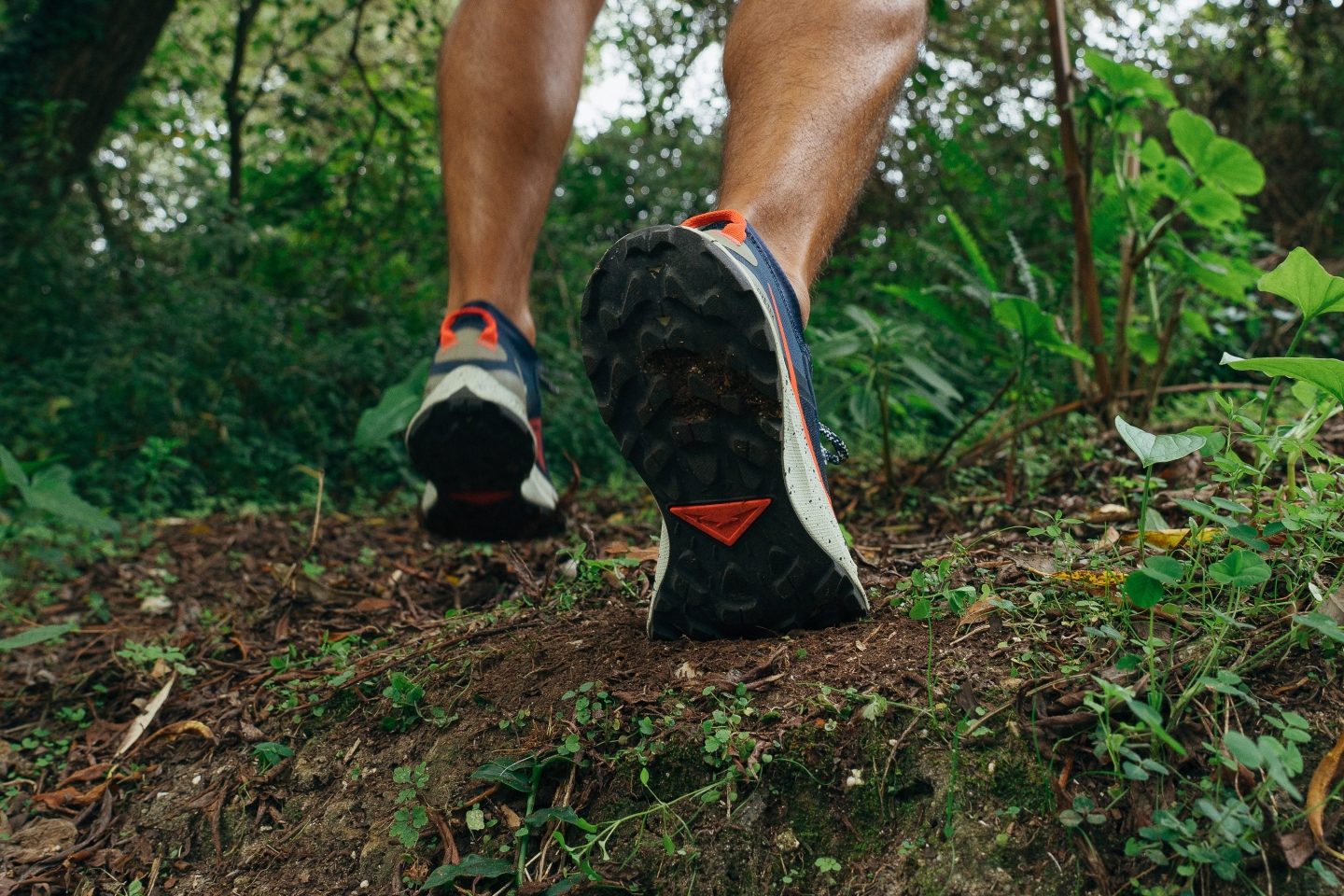
However, things are changing. With the growing popularity of ultra-trail races, many of which take place in the summer, brands have started to improve the breathability of their trail shoes. These changes are crucial for races that can stretch well beyond 100 miles.
That said, trail shoes still aren't as breathable as road running shoes. Our current lab data shows that road shoes average a 3.8 in breathability, while trail shoes score around 3.4. But the gap is closing, and it's possible that trail shoes could become more breathable than road shoes in the future—a thought that was once unimaginable.
The key takeaway is to consider your specific needs. If you're running in cold or high-altitude areas, breathability might not be a priority. But for summer trail runs, look for shoes that score at least 3-out-of-5 on our breathability test.
Below are five trail running shoes that excel in ventilation, based on our lab tests:
Airflow in Gore-Tex shoes

Gore-Tex shoes promise to let air out while keeping water from getting in. While they do keep this patented promise, they're not great at letting enough air out, making them less breathable.
In simpler terms, while some steam can escape from a Gore-Tex shoe, it's usually minimal, thus not enough for good airflow. For instance, the Nike Pegasus Trail 3 GTX in the video below only lets a small amount of smoke out through parts of the tongue and hardly any from the toebox.
Final thoughts
While breathability may not be as attention-grabbing as advanced foams or specialized outsoles, it plays a critical role in both training and racing. Your choice can significantly impact your comfort and performance, and it should be tailored to your specific needs, including your geographic location, the current season, and your feet's unique characteristics.
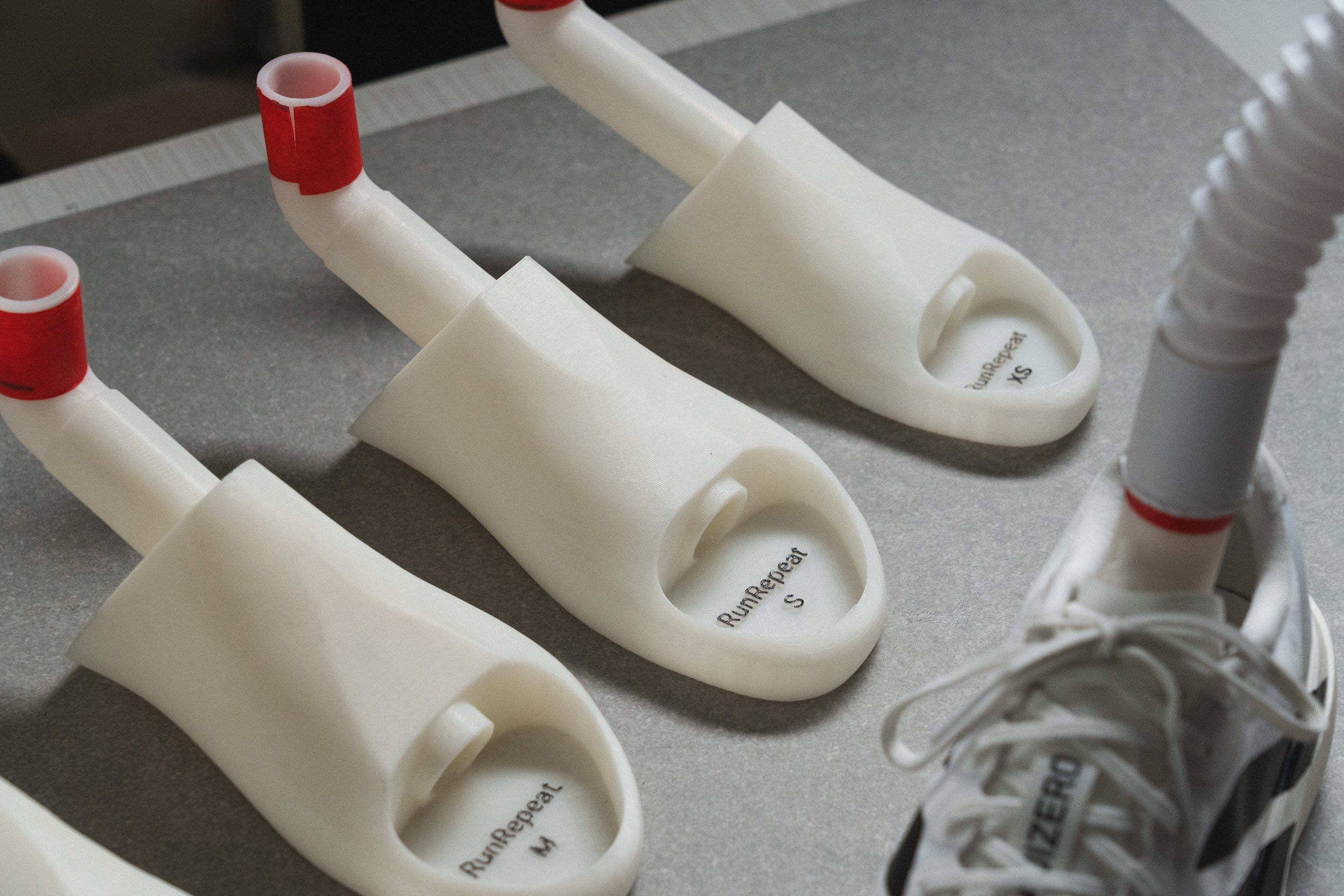
At RunRepeat, we've got you covered no matter what you're looking for. Whether you need a winter-ready running shoe that holds in heat or a lightweight, airy option for summer runs, we provide lab-tested scores on breathability. This makes it straightforward for you to find the perfect fit for your next pair of running shoes, ensuring you get the most fun and performance of every run.
